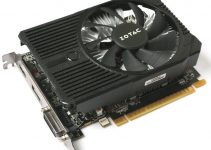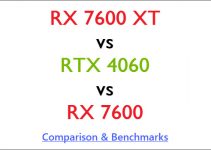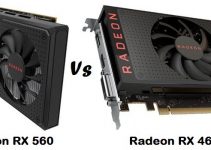GeForce RTX 5070 Ti is the third GeForce RTX 50 series graphics card launched by Nvidia in 2025. The card sits below the RTX 5080 and is a slightly slimmed-down version of the RTX 5080 with slightly lesser cores, slightly lower memory speed, and lower power consumption. It is a high-end card that competes against the RTX 4070 Ti SUPER, Radeon RX 7900 XTX, and even the RTX 4080 SUPER, one of the most powerful GeForce RTX 40 series cards. GeForce RTX 5070 Ti is a powerful graphics card for 4K gaming and high FPS 1440p gaming. To help you make an informed decision, I will compare RTX 5070 Ti with its closest competitors, including RTX 4070 Ti SUPER, Radeon RX 7900 XTX, and RTX 4080 SUPER, on various important parameters, performance, and features.
RTX 5070 Ti vs RTX 4070 Ti SUPER vs RX 7900 XTX vs RTX 4080 SUPER
Below is a comparison between RTX 5070 Ti, RTX 4070 Ti SUPER, RTX 4080 SUPER, and RX 7900 XTX graphics cards based on their specifications, gaming performance, pricing, power consumption, and features.
GPU Architecture
GeForce RTX 5070 Ti is built on Nvidia’s Blackwell GPU architecture on a 5nm manufacturing process. It uses GB203 GPU chip and has 8960 CUDA Cores, 70 RT Cores (4th Generation), and 280 Tensor Cores (5th Generation).
RTX 4070 Ti SUPER is built on the Ada Lovelace architecture on a 5nm fabrication process. It uses AD103 chip in a cut-down form and comes with 8488 CUDA Cores, 66 RT Cores (3rd Generation), and 264 Tensor Cores (4th Generation).
RTX 4080 SUPER is built on the Ada Lovelace GPU architecture with a 5nm manufacturing process. It uses AD103 GPU chip and has 9725 CUDA Cores, 76 RT Cores (3rd Generation), and 304 Tensor Cores (4th Generation).
Radeon RX 7900 XTX is built on RDNA 3 GPU architecture. It uses a Chiplet design where the GPU package consists of a Graphics Compute Die (GCD) and multiple Memory Cache Dies (MCD) surrounding the GCD. The GCD is built on a 5nm fabrication process, while the MCD is built on a 6nm manufacturing process. The card uses Navi 31 GPU chip and has 6144 Stream Processors, 96 Ray Accelerators, and 192 AI Accelerators.
Check out: CUDA Cores vs Stream Processors Difference
| RTX 5070 Ti | RTX 4070 Ti SUPER | RX 7900 XTX | RTX 4080 SUPER | |
| GPU Chip | GB203 | AD103 | Navi 31 | AD103 |
| GPU Architecture | Blackwell | Ada Lovelace | RDNA 3 | Ada Lovelace |
| Fabrication Process | 5nm | 5nm | 5nm | 5nm |
| CUDA Cores/Stream Processors | 8960 CUDA Cores | 8448 CUDA Cores | 6144 Stream Processors | 9725 CUDA Cores |
| RT Cores | 70 (4th Generation) | 66 (3rd Generation) | 96 | 76 (3rd Generation) |
| Tensor Cores / | 280 (5th Generation) | 264 (4th Generation) | 192 | 304 (4th Generation) |
Video RAM [VRAM]
RTX 5070 Ti comes with 16 GB GDDR7 memory with a 256-bit interface. The memory runs at 28 Gbps and generates a bandwidth of 896 GB/s. RX 7900 XT has 24 GB GDDR6 memory with a 384-bit interface and runs at 20 Gbps, delivering a bandwidth of 960 GB/s. Moreover, RX 7900 XTX also comes equipped with 96MB Infinity Cache, an ultra-fast memory cache that can provide a peak memory bandwidth of 3500 GB/s.
The RTX 4070 Ti SUPER has 16 GB of GDDR6X memory with a 256-bit interface. Its memory speed is 21Gbps and generates a memory bandwidth of 672 GB/s. On the other hand, the RTX 4080 SUPER has 16 GB of GDDR6X memory with a 256-bit interface and a speed of 22.4 Gbps. The memory bandwidth generated is 717 GB/s.
| RTX 5070 Ti | RTX 4070 Ti SUPER | RX 7900 XTX | RTX 4080 SUPER | |
| Memory Size | 16 GB GDDR7 | 16 GB GDDR6X | 24 GB GDDR6 | 16 GB GDDR6X |
| Memory Interface | 256-bit | 256-bit | 384-bit | 256-bit |
| Memory Speed | 28 Gbps | 21 Gbps | 20 Gbps | 22.4 Gbps |
| Memory Bandwidth | 896 GB/s | 672 GB/s | 960 GB/s | 717 GB/s |
| Infinity Cache | NA | 96 MB | NA |
Features
All three graphics cards are VR-ready and support DirectX 12, OpenGL 4.6, Vulkan, AV1 Encode/Decode, Real-Time Ray Tracing, and variable refresh rate technologies G-Sync/FreeSync. RTX 5070 Ti supports PCIe 5.0 (PCI-Express Gen5) while RTX 4070 Ti, RTX 4080 SUPER, and RX 7900 XTX support PCIe 4.0 (Gen4) interface. Regarding image upscaling technologies for increasing frame rate in games, RTX 5070 Ti supports DLSS 4, RTX 4070 Ti SUPER and RTX 4080 SUPER supports DLSS 3, while RX 7900 XTX supports AMD FidelityFX Super Resolution (FSR 3).
When it comes to video output ports, the RTX 5070 Ti supports DisplayPort 2.1b and HDMI 2.1b, the RX 7900 XTX supports DisplayPort 2.1a and HDMI 2.1a, and the RTX 4070 Ti SUPER and RTX 4080 SUPER support HDMI 2.1a but do not support DisplayPort 2.1.
| RTX 5070 Ti | RTX 4070 Ti SUPER | RX 7900 XTX | RTX 4080 SUPER | |
| Bus Interface | PCI Express 5.0 | PCI Express 4.0 | PCI Express 4.0 | PCI Express 4.0 |
| DirectX | 12 Ultimate | 12 Ultimate | 12 Ultimate | 12 Ultimate |
| OpenGL | 4.6 | 4.6 | 4.6 | 4.6 |
| Vulkan | 1.4 | 1.3 | 1.3 | 1.3 |
| SLI / CrossFire | NA | NA | NA | NA |
| VR Ready | Yes | Yes | Yes | Yes |
| G-Sync/FreeSync | Yes | Yes | Yes | Yes |
| HDMI 2.1 | Yes (HDMI 2.1b) | Yes (HDMI 2.1a) | Yes (HDMI 2.1a) | Yes (HDMI 2.1a) |
| DisplayPort 2.1 | Yes (DisplayPort 2.1b) | No | Yes (DisplayPort 2.1a) | No |
| AV1 Support (Encode/Decode) | Yes | Yes | Yes | Yes |
| Real-Time Ray Tracing | Yes | Yes | Yes | Yes |
| Deep Learning Super Sampling (DLSS) | Yes (DLSS 4) | Yes (DLSS 3) | NA | Yes (DLSS 3) |
| FidelityFX Super Resolution (FSR) | NA | NA | FSR 3 | NA |
Gaming Performance
Here are the gaming benchmarks of these cards at 1440p and 4K resolution in latest AAA games.
1440p Gaming Benchmarks
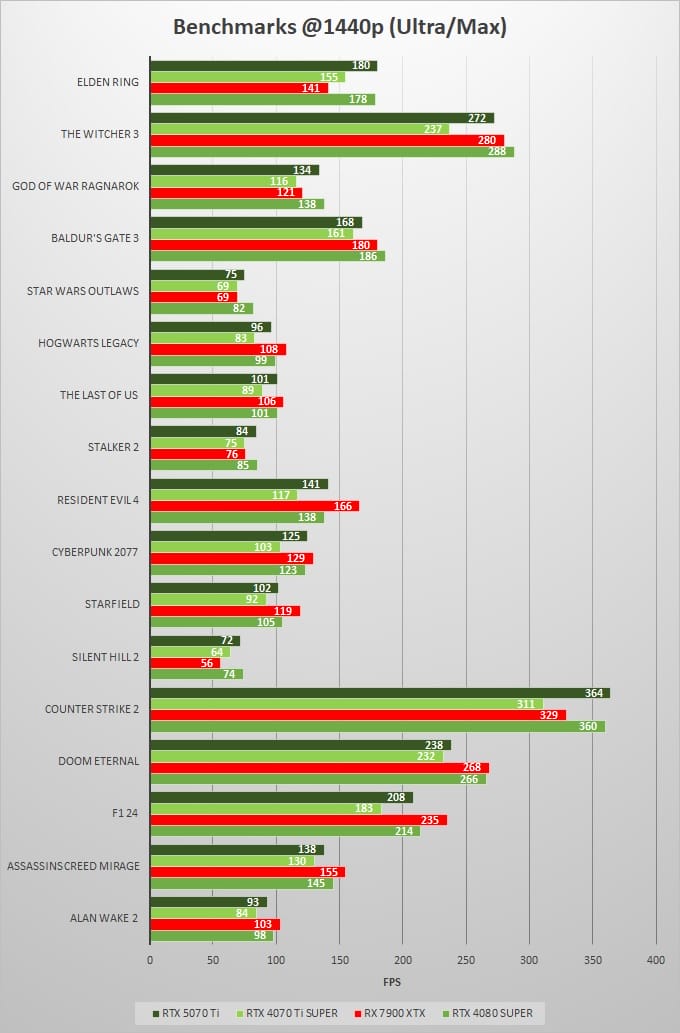
4K Gaming Benchmarks
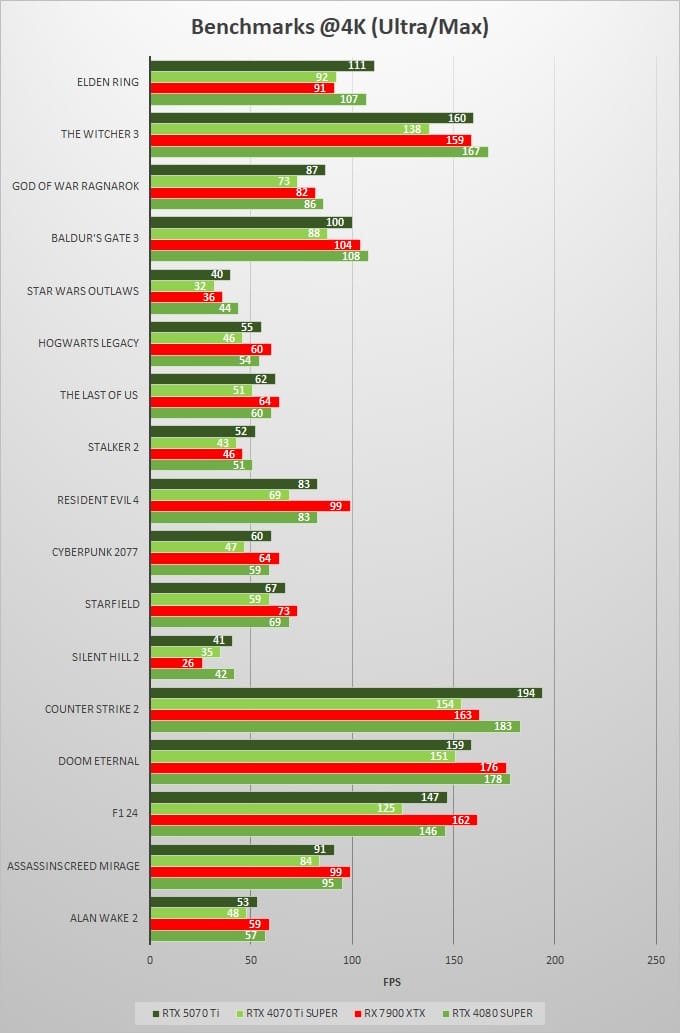
The above gaming benchmarks show that the RTX 5070 Ti is almost as fast as the RTX 4080 SUPER and RX 7900 XTX and is around 13% faster than the RTX 4070 Ti SUPER.
Ray Tracing Performance
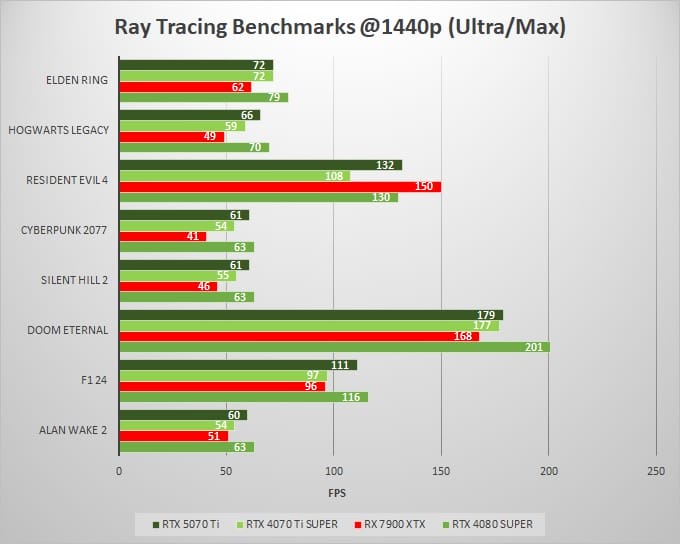
In Ray Tracing, RTX 5070 Ti is around 10 percent faster than RTX 4070 Ti SUPER and 36 percent faster than RX 7900 XTX. RTX 4080 SUPER is only 4 percent faster than RTX 5070 Ti in Ray Tracing.
Power Consumption
RTX 5070 Ti has a maximum power consumption of 300W and needs a 750W or higher PSU. RTX 4080 SUPER power consumption is 320W and needs a 750W power supply. RX 7900 XTX’s maximum power consumption is 355W and requires 800W or better power supply. RTX 4070 Ti SUPER has the lowest power consumption figure of 285W only. For power, RTX 5070 Ti, RTX 4070 Ti SUPER, and RTX 4080 SUPER use a single 16-pin 12VHPWR / 12V-2×6 connector, while the RX 7900 XTX uses two 8-pin PCIe connectors from the power supply unit.
| RTX 5070 Ti | RTX 4070 Ti SUPER | RX 7900 XTX | RTX 4080 SUPER | |
| Power Connector | 16-pin 12V-2×6 HPWR | 16-pin 12VHPWR | 8-pin PCIe (x 2) | 16-pin 12VHPWR |
| Power Consumption | 300W | 285W | 355W | 320W |
| Recommended PSU | 750W | 700W | 800W | 750W |
Pricing & Availability
The official MSRP for RTX 4080 SUPER and RX 7900 XT cards is 999 USD. The official MSRP for RTX 5070 Ti is 749 USD, while that of RTX 4070 Ti SUPER is 799 USD. The custom models of these cards from different AIB partners cost more, and you can check the latest prices and availability of these cards from the links below.
Check RTX 5070 Ti Price on Amazon
Check RTX 4070 Ti SUPER on Amazon
Check RX 7900 XTX Price on Amazon
Check RTX 4080 SUPER Price on Amazon
RTX 5070 Ti vs RTX 4070 Ti SUPER vs RX 7900 XTX vs RTX 4080 SUPER Specifications
| RTX 5070 Ti | RTX 4070 Ti SUPER | RX 7900 XTX | RTX 4080 SUPER | |
| GPU Chip | GB203 | AD103 | Navi 31 | AD103 |
| GPU Architecture | Blackwell | Ada Lovelace | RDNA 3 | Ada Lovelace |
| Fabrication Process | 5nm | 5nm | 5nm | 5nm |
| CUDA Cores/Stream Processors | 8960 CUDA Cores | 8448 CUDA Cores | 6144 Stream Processors | 9725 CUDA Cores |
| Ray Tracing Cores | 70 (4th Generation) | 66 (3rd Generation) | 96 | 76 (3rd Generation) |
| Tensor Cores | 280 (5th Generation) | 264 (4th Generation) | 192 | 304 (4th Generation) |
| Memory Size | 16 GB GDDR7 | 16 GB GDDR6X | 24 GB GDDR6 | 16 GB GDDR6X |
| Memory Interface | 256-bit | 256-bit | 384-bit | 256-bit |
| Memory Speed | 28 Gbps | 21 Gbps | 20 Gbps | 22.4 Gbps |
| Memory Bandwidth | 896 GB/s | 672 GB/s | 960 GB/s | 717 GB/s |
| Bus Interface | PCI Express 5.0 | PCI Express 4.0 | PCI Express 4.0 | PCI Express 4.0 |
| DirectX | 12 Ultimate | 12 Ultimate | 12 Ultimate | 12 Ultimate |
| OpenGL | 4.6 | 4.6 | 4.6 | 4.6 |
| Vulkan | 1.4 | 1.3 | 1.3 | 1.3 |
| SLI / CrossFire | NA | NA | NA | NA |
| VR Ready | Yes | Yes | Yes | Yes |
| G-Sync/FreeSync | Yes | Yes | Yes | Yes |
| Power Consumption | 300W | 285W | 355W | 320W |
| Recommended PSU | 750W | 700W | 800W | 750W |
Final Words
Well, there is no doubt that the RTX 5070 Ti is an excellent card, considering all factors, including price, performance, features, and power consumption. It is as fast as the RTX 4080 SUPER and RX 7900 XTX and comes with better tech that includes PCIe 5.0 support, GDDR7 memory, DisplayPort 2.1b support, DLSS 4, and better video encode/decode hardware acceleration. Also, it is very energy efficient considering the performance it offers over its competitors. If you can find one that is available close to its official MSRP, then it is a must buy. Please comment below if you have any thoughts on this comparison or want to ask any queries.
(*This post may contain affiliate links, which means I may receive a small commission if you choose to purchase through the links I provide (at no extra cost to you). Thank you for supporting the work I put into this site!)
